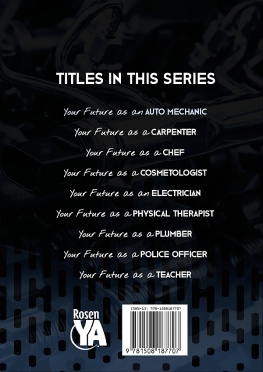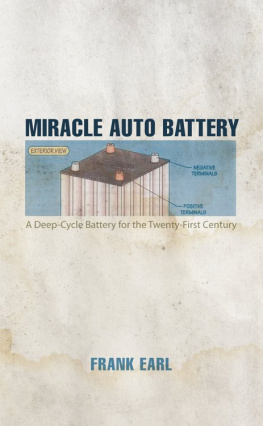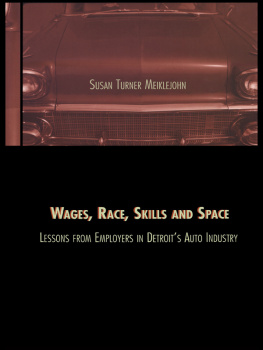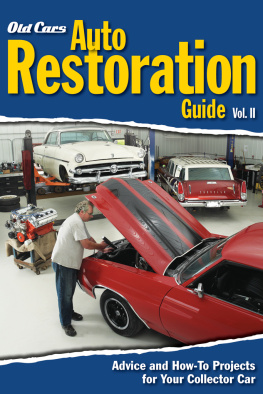

ALSO BY JIM MOTAVALLI
Forward Drive: The Race to Build Clean Cars for the Future (Sierra Club Books, 2000)
Breaking Gridlock: Moving Toward Transportation That Works (Sierra Club Books, 2001)
Naked in the Woods: Joseph Knowles and the Legacy of Frontier Fakery (Da Capo, 2008)
AS EDITOR
Feeling the Heat: Dispatches from the Frontlines of Climate Change (Routledge, 2004)
Green Living: The E Magazine Guide to Living Lightly on the Planet (Plume, 2005)
EarthTalk: Expert Answers to Everyday Questions about the Environment (Plume, 2009)
AS CONTRIBUTOR
The Whole Green Catalog: 1,000 Best Things for You and the Earth (Rodale, 2009)
Nonprofit Guide to Going Green (Wiley, 2009)

For Mary Ann, Maya, and Delia, my copilots on this journey
CONTENTS
INTRODUCTION
The importance of the Volt is more than a single profit-and-loss statement.
ROB PETERSON, GENERAL MOTORS
BY THE TIME YOU READ THIS, the showrooms will be full of green car options that didnt exist even a year ago. You can walk right in and buy one of several zero-emission cars that plug into the wall and operate for just a few cents a mile. There will be more hybrid choices than ever before, plus a new variation, the plug-in hybrid, which extends the concept with up to 50 miles of battery-only range. In a few more years, hydrogen fuel-cell cars will also be ready for sale to the public.
If youre like most people, you probably have more than one reason to be interested in the new generation of electric cars. You know they have much lower operating costs, sure, but you also like the idea of automobiles running on batterieswith no dependence on foreign oil and no polluting tailpipe. Youre intrigued that this new technology is enjoying a rebirth, and wondering if nows the time to plunge ahead, be an early adopter, and put a green car in the driveway.
Maybe youre a bit like James Brazell of Asheville, North Carolina, who in February of 2011 became one of the first 500 purchasers of the innovative Chevrolet Volt, a plug-in hybrid so with the cars 35 miles of all-electric range he can mostly avoid visiting gas stations. But when he needs to make longer trips, such as his frequent 230-mile round-trip runs to Charlotte for football games, the car can accommodate that with 300 miles of range provided by the gas engine.
Brazell is 84, which made him the oldest Volt customer, but more important than that, hes the former coordinator of worldwide exploration and production for oil giant Texaco. That gives him an insiders perspective on our dwindling fossil fuel supply. And hes worriedlets make that very worriedabout the future.
I think were very close to peak oil, Brazell told me. Production might plateau where we are for a while, maybe a year or two, but then it will start to decline. If demand [especially from China] keeps rising as it has been, the stress point on worldwide production is going to be reached, and that will happen this decade for sure.
It isnt necessary to have worked for Texaco to be worriedlets make that very worriedabout our foreign oil dependence. A 2010 Rock the Vote poll The growing alarm is bipartisan, which isnt something you can say about climate changethat splits Americans along ideological lines.
But even if youre a global warming skeptic, youre probably worrying about it at least a little bit, and when coupled with
Fortunately, after a series of false starts, technology breakthroughs are enabling electric cars to compete with gasoline vehicles from the worlds carmakers. Not until 2011 did consumers finally have a real range of green car choices (see the definitions below). Whats unfolding today is the culmination of a historic drama thats been proceeding in fits and starts for more than a hundred years. Your great-grandparents might have driven electric cars.
Were still in a very early stage of their development, and the cars arent yet all they can and will be. Hybrid cars have gone mainstream; though the Prius was once derided as Toyotas folly, its gone on to sell more than 2 million units worldwide. But the Prius didnt bound out of the gate, and the new cars probably wont, either. There are challenges. Battery electric vehicles (EVs) have limited ranges (100 miles, usually) that get shorter in cold weather. Plug-in hybrids, which solve the range anxiety problem with a few hundred extra miles provided by the gasoline engine, are expensiveand therefore may not justify their extra cost by operating at a lower cost.
GREEN CARS: HERE WE GO AGAIN
Im writing this book at a point in history that has strong parallels with 1900, when the fledgling auto industry was building electric, gasoline, and steam carseach with noisy advocates
Gas cars of the period were infernal, noisy machines that could break arms when the engines caught after owners turned them over with hand cranks. An early commentator called the internal-combustion engine noxious, noisy, unreliable, and elephantine. It vibrates so violently as to loosen ones dentures. The automobile industry will surely burgeon in America, but this motor will not be a factor.
Famous last words. The first EVs, powered by variations of the same lead-acid batteries that are under the hoods of our gas cars today, were fated for oblivion when General Motors Charles Kettering pioneered the self-starter for gas cars (it debuted on the 1912 Cadillac). Electrics saw their market steadily shrink. Soon the plug-in cars were targeted mainly to women, whose domestic sphere, containing home, school, and grocery store, supposedly meant that their limited range was not a factor.
Maybe the story would have been different if people at the time had had any idea that cars with tailpipes polluted. The same awareness might have saved our extensive national trolley system. But EVs were sidelined without much second-guessing, and they made only sporadic and, because they were pitted against perennially cheap gasoline, doomed revival efforts until recently.
The Arab oil embargo of 1973 brought EVs out of hiding and in the 2006 film it helped inspire, Chris Paines Who Killed the Electric Car?
The EV1, called the tragic hero of the electric car narrative by Time magazine, met its demise in 2003, with only about 800 having been leased in California and Arizona. The cars, taken back and crushed by an automaker wary of warranty claims on the battery packs, seemed to symbolize the end of an era, the death of a dream.
The EV1 was up against stiff headwinds, including the early stages of the SUV craze, very cheap gas, and its dependence on outdated battery technology. Most of the EV1s had lead-acid batteries, just like those that power the 1909 Baker Electric in Jay Lenos Big Dog Garage. In economy mode, the two-seater EV1 could deliver 100 miles of range with second-generation batteries, but performance mode cut that in half. Even with all of that, the early adopters who had briefly lived with the GM cars fell totally in love.
So whats different now? Everything. The plugs are back, and this time to stay. Battery technology has taken a major leap forward, from lead-acid to nickel-metal hydride and now to lithium-ion, and range has stabilized at about 100 miles. Thats still not greatand its provoking a lot of nail-bitingbut with carmakers focused on electrics, batteries are finally getting the kind of concentrated research effort they need to make progress.
Next page











